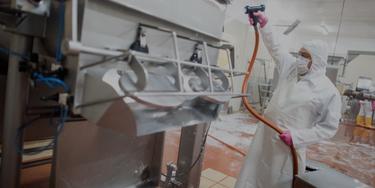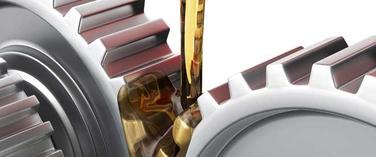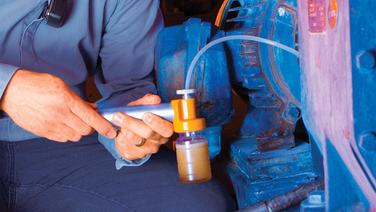
Maximizing Gearbox Lifespan in Harsh Environments
Gearboxes play a crucial role in many industries, providing the necessary power and torque to various systems. However, when it comes to operating in harsh environments, gearboxes face unique challenges that can significantly impact their lifespan. The combination of abrasive particles, extreme temperatures, and corrosive agents gradually degrades the lubrication film, leading to increased friction and wear. As a result, the gearbox components experience higher stress levels, reducing their overall lifespan. It is crucial to analyze the impact of these environmental factors on gearbox performance and take appropriate measures to counteract their effects.
In this article, we will explore the common challenges gearboxes encounter in harsh environments and discuss strategies for maximizing their lifespan.
Understanding the Impact of Harsh Environments on Gearbox Lifespan
Harsh environments significantly affect gearbox lifespan. One of the key factors that contribute to the degradation of gearbox performance in harsh environments is the presence of abrasive particles. These particles, such as dust, dirt, and debris, can infiltrate the gearbox housing and contaminate the lubricant. Over time, these particles cause microscopic damage to the gearbox components if they enter the gearbox. This damage not only increases friction but also accelerates wear, leading to premature failure of the gearbox. Therefore, implementing effective mechanical seals and regular maintenance procedures to change the oil is essential in prolonging gearbox lifespan.
In addition to abrasive particles, extreme temperatures also pose a significant challenge to gearbox performance.
Identifying Proper Oil Options for Gearboxes in Harsh Environments.
It is essential to consider the following criteria when choosing lubricants:
- Viscosity – Often considered the most critical characteristic of lubricating oils.
- Additives – A lubricant's additive package determines its general category and impacts various fundamental performance properties.
- Base Oil Type – Function, gear type, and operating conditions should all be considered when selecting a base oil.

It is important to consider a variety of factors when selecting industrial gear lubricants, including product availability, operating conditions, the preferred brand of oil, and product consolidation efforts. Proper lubricant selection is a cornerstone decision for any gearbox operating in intense, harsh conditions.
Whether it's scorching heat or freezing cold, temperature extremes can affect the lubrication properties of the gearbox, leading to inadequate lubrication and increased friction. In high-temperature environments, the lubricant can break down, losing its viscosity and lubricating properties. This can result in insufficient ,oil film thickness, leading to increased metal-to-metal contact and elevated friction levels.
On the other hand, in extremely cold temperatures, the lubricant can thicken, impeding its flow and reducing its ability to provide adequate lubrication. To mitigate the impact of extreme temperatures, gearbox designers can employ oil heaters and select lubricants that can withstand high temperatures or low temperatures. They are not good at doing both. Additionally, thermal insulation or cooling systems are often used.
Choosing the Right Materials for Gearboxes in Harsh Environments
One of the first considerations when selecting housing materials for gearboxes in harsh environments is corrosion resistance. Gearboxes that are exposed to moisture and chemicals are particularly susceptible to corrosion. To combat this, engineers often turn to nickel, chrome, or other plating materials depending on the housing material to withstand corrosive environments, ensuring that the gearbox remains protected and functional for an extended period. Stainless steel, and specifically 316 (vs 304) is the best and most expensive option.
In addition to corrosion resistance, the choice of materials for gearbox shafts should also prioritize hardness. By subjecting the shaft to heat treatment processes, the steel's hardness is increased, resulting in improved resistance to wear under the oil seal.
This is particularly crucial where the gearbox is subjected to high loads, vibrations, and abrasive particles. The use of hardened steels ensures that the gearbox can withstand these challenging conditions, minimizing the risk of premature failure and costly downtime.
As technology continues to advance, the materials available for gearboxes will continue to evolve, providing engineers with even more innovative solutions to tackle the demands of harsh environments.
Preventive Maintenance Techniques for Gearboxes in Harsh Environments
Implementing effective preventive maintenance techniques is vital for maximizing gearbox lifespan. Regular inspections, lubrication analysis, and proactive component replacements can help identify potential issues before they escalate. Additionally, incorporating condition monitoring systems can provide real-time insights into the gearbox's health, enabling timely maintenance and minimizing costly downtime.
When performing maintenance, it is crucial to follow manufacturer guidelines and use recommended lubricants and sealants. Implementing proper lubrication practices, such as initiating regular oil changes, can significantly extend gearbox life.
One important aspect of preventive maintenance for gearboxes in harsh environments is the inspection process. Regular inspections allow for the early detection of any signs of wear, damage, or contamination. This can include checking for leaks, loose bolts, or abnormal noise during operation. By conducting thorough inspections, about 1 hour after start-up and washdown, maintenance personnel can identify potential issues and take corrective actions before they lead to major breakdowns or failures.
Another crucial technique is lubrication analysis. This involves regularly sampling and analyzing the gearbox's lubricating oil to assess its condition and identify any contaminants or signs of degradation.
By monitoring the oil's viscosity, acidity, and the presence of metal particles, maintenance professionals can determine if the lubricant needs to be replaced or if there are underlying issues within the gearbox that require attention.

In addition to inspections and lubrication analysis, proactive component replacements play a significant role in preventive maintenance. In large gearboxes, certain gearbox components, such as bearings, seals, and gaskets, are more prone to wear and failure in harsh environments. By proactively replacing these components based on manufacturer recommendations or historical data, maintenance personnel can prevent unexpected breakdowns and extend the overall lifespan of the gearbox.
Furthermore, the integration of condition monitoring systems can greatly enhance preventive maintenance efforts. These systems use sensors and advanced analytics to continuously monitor various parameters, such as temperature, amp draw and vibration, providing real-time insights into the gearbox's health. By detecting any abnormal patterns, maintenance teams can take immediate action, schedule maintenance activities, and avoid costly unplanned downtime.
Remember, preventive maintenance is not a one-time task but an ongoing process. By implementing these techniques and adhering to best practices, you can ensure the longevity and reliability of your gearboxes in even the harshest environments.
Selecting the Right Gearbox for Harsh Environments
Choosing the right gearbox from the start can have a substantial impact on its lifespan in harsh environments. Selecting inefficient right-angle gearboxes will run hot, which will add to your heating, ventilation and air conditioning (HVAC) cost or fail sooner in hot environments. People don’t realize that an efficient gearbox can be 40% more efficient than an inexpensive gearbox and reduce the carbon footprint of the plant. The ROI can be realized within 1-2 years. Collaborating with experienced gearbox manufacturers like Sumitomo Drive Technologies can provide valuable insights and the highest quality solutions for harsh environment applications.
In conclusion, maximizing gearbox lifespan in harsh environments requires careful consideration of the operating conditions and appropriate measures to mitigate the challenges posed by these environments. By identifying common challenges, selecting the right materials, understanding the environmental impact, implementing preventive maintenance techniques, and selecting the appropriate gearbox, industries can significantly improve the reliability, efficiency, and longevity of their gearboxes in harsh environments.
Why Choose Sumitomo Drive Technologies?
Sumitomo Drive Technologies is a renowned and trusted manufacturer of high-quality gearboxes. With extensive expertise in designing and manufacturing gearboxes for harsh environments, Sumitomo Drive Technologies offers innovative solutions, incorporating advanced materials, precise engineering, and robust quality assurance processes. Choosing Sumitomo Drive Technologies ensures you receive durable and reliable gearboxes that can withstand the most demanding conditions, thereby maximizing their lifespan in harsh environments.